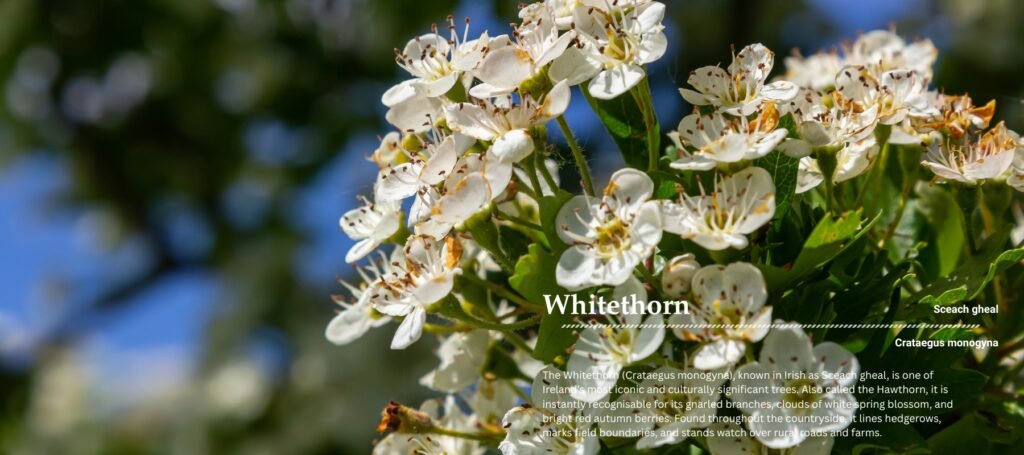A Season of Blossoms and Berries
In late spring, the Whitethorn bursts into bloom, covering itself in fragrant clusters of white flowers that attract bees, hoverflies, and pollinators in their thousands. These blossoms are a rich and vital source of nectar at a time when few other trees are flowering.
As summer fades, the flowers give way to haws, clusters of small red berries that glow against the fading green. These fruits are a lifeline for birds such as thrushes, finches, and blackbirds, providing essential nourishment through autumn and into the depths of winter.
A Shelter for Wildlife
The Whitethorn’s dense, thorn-covered branches form one of the best natural shelters in the Irish countryside. Birds find safe nesting spots within its tangle of twigs, protected from predators and harsh weather. Small mammals seek refuge in its roots and undergrowth, while insects thrive among its leaves and bark.
Its deep roots also stabilise the soil, preventing erosion and helping to maintain healthy field and riverbank systems. Adaptable and hardy, the Whitethorn flourishes in a wide range of soils and climates, making it one of the most dependable species in Ireland’s natural and agricultural landscapes.
The Tree of Folklore and Protection
No tree in Ireland carries as much folklore as the Whitethorn. Known as the fairy tree, it was believed to mark places where the human and spirit worlds touched. Cutting down or disturbing a lone Whitethorn was considered deeply unlucky, a superstition that many still quietly honour today.
The May blossom was once celebrated during Beltane, symbolising renewal, love, and fertility. However, bringing it indoors was said to invite misfortune. These old beliefs endure as reminders of how closely our ancestors watched and respected the rhythms of nature.
Planting a Living Legacy
When you plant a Whitethorn with Grown Forest, you are joining a story that has been unfolding for centuries. You are feeding pollinators in spring, sheltering birds in summer, and offering berries through winter. You are also preserving one of Ireland’s oldest and most respected traditions — the belief that nature deserves both reverence and protection.
The Whitethorn stands as a living link between people, land, and legend. Each tree planted is a quiet act of stewardship, ensuring that Ireland’s hedgerows remain alive with song, blossom, and myth for generations to come.

